Abstract
Phage-resistant mutants, isolated from cultures of Lactococcus lactis subsp. lactis C2 infected with phage c2, did not form plaques but bound phage normally. The mutants were sensitive to another phage, sk1, although the number of plaques was reduced approximately 56% and the plaques were four times smaller. Binding to phage sk1 was reduced about 10%. Another group of phage-resistant mutants, isolated from cultures infected with phage sk1, bound normally to both phages c2 and sk1 but did not form plaques with either phage. Carbohydrate analyses by gas chromatography of the cell walls showed no significant differences in saccharide compositions between the wild-type and phage-resistant cells. However, a difference was observed in the interactions of the phage with the cytoplasmic membranes. Membranes from the wild-type cells, but not mutant cells, inactivated phage c2. Phage sk1 was not inactivated by membrane from either strain. Treatment of wild-type membranes with proteinase K eliminated the ability of the membrane to inactivate the phage, whereas treatment with mutanolysin had no effect. On the basis of this ability to inactivate the phage, a membrane protein was partially purified by gel filtration and ion-exchange chromatography. Under nondenaturing conditions, the phage-inactivating protein has an apparent Mr of approximately 350,000. The protein has an apparent subunit size of 32 kDa, which suggests that it normally exists as a multimer with 10 to 12 subunits or in association with other membrane components. It is proposed that this protein is required for phage c2 infection.
Full text
PDF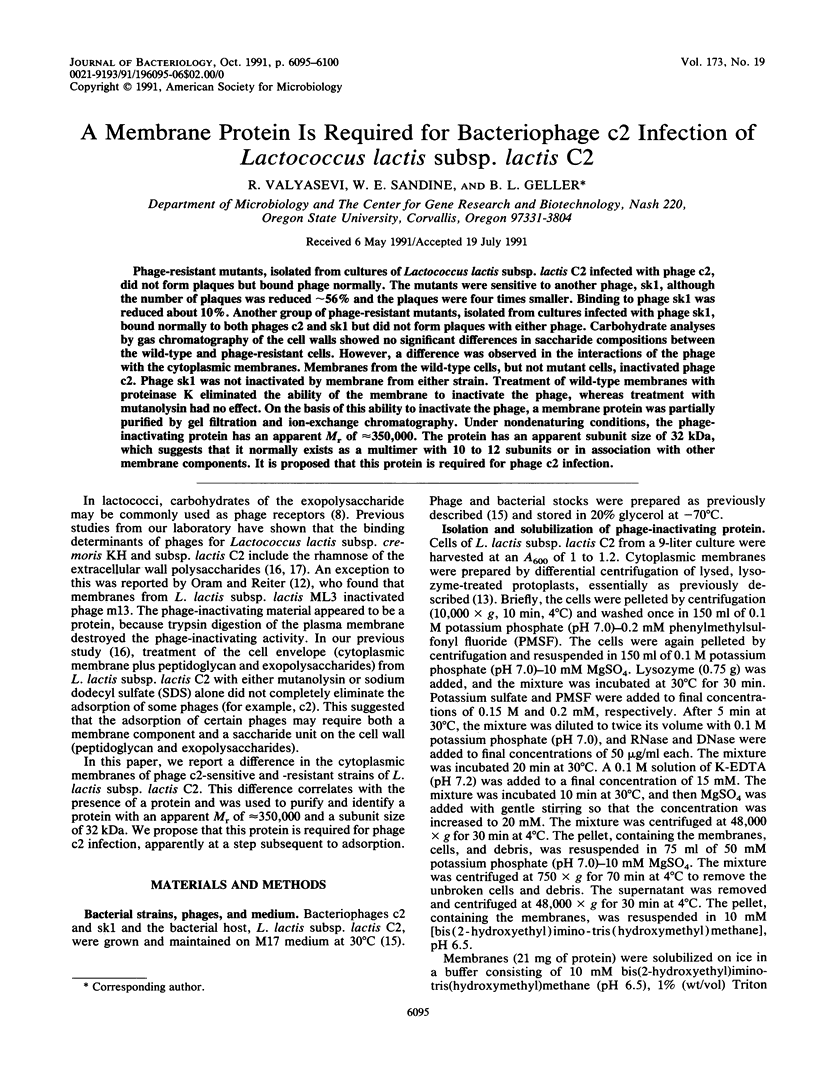
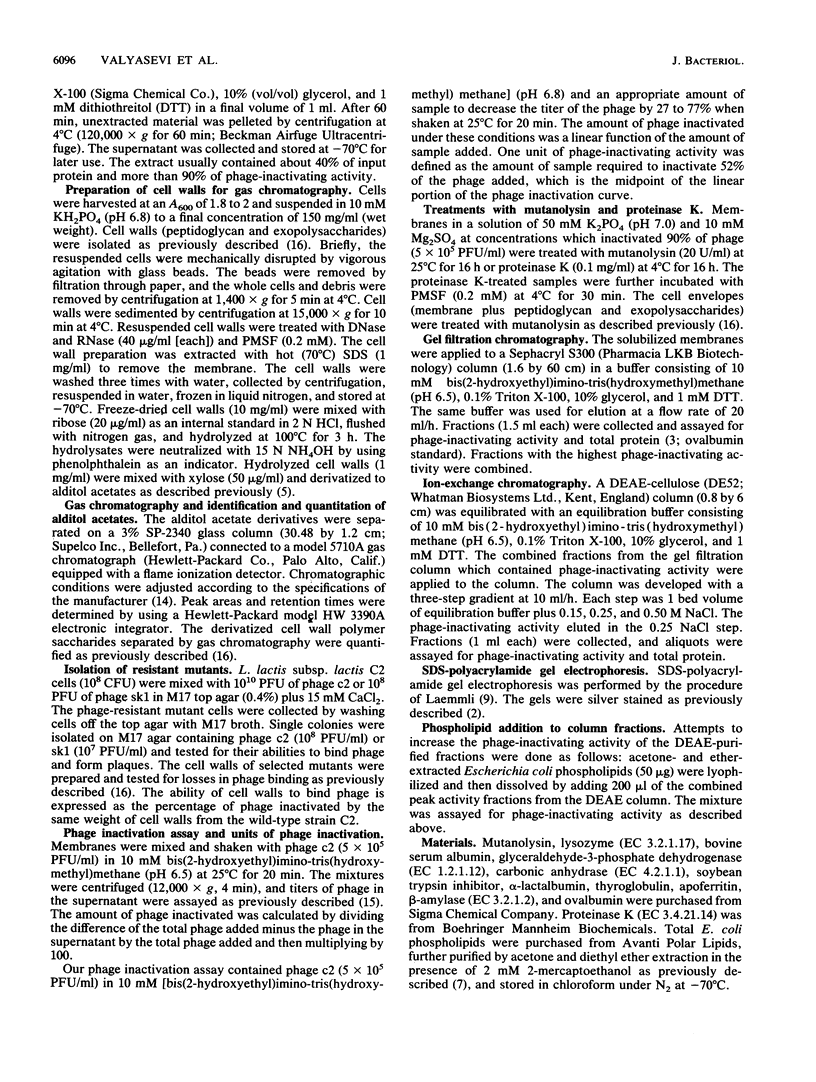
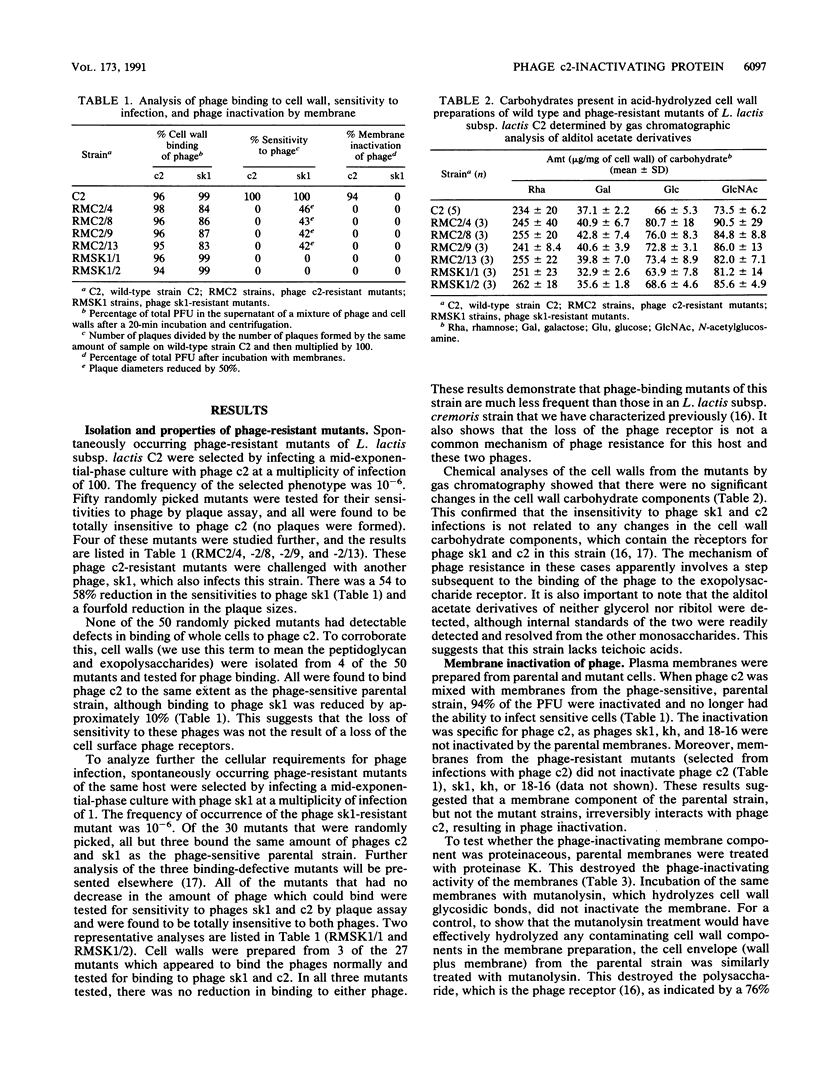
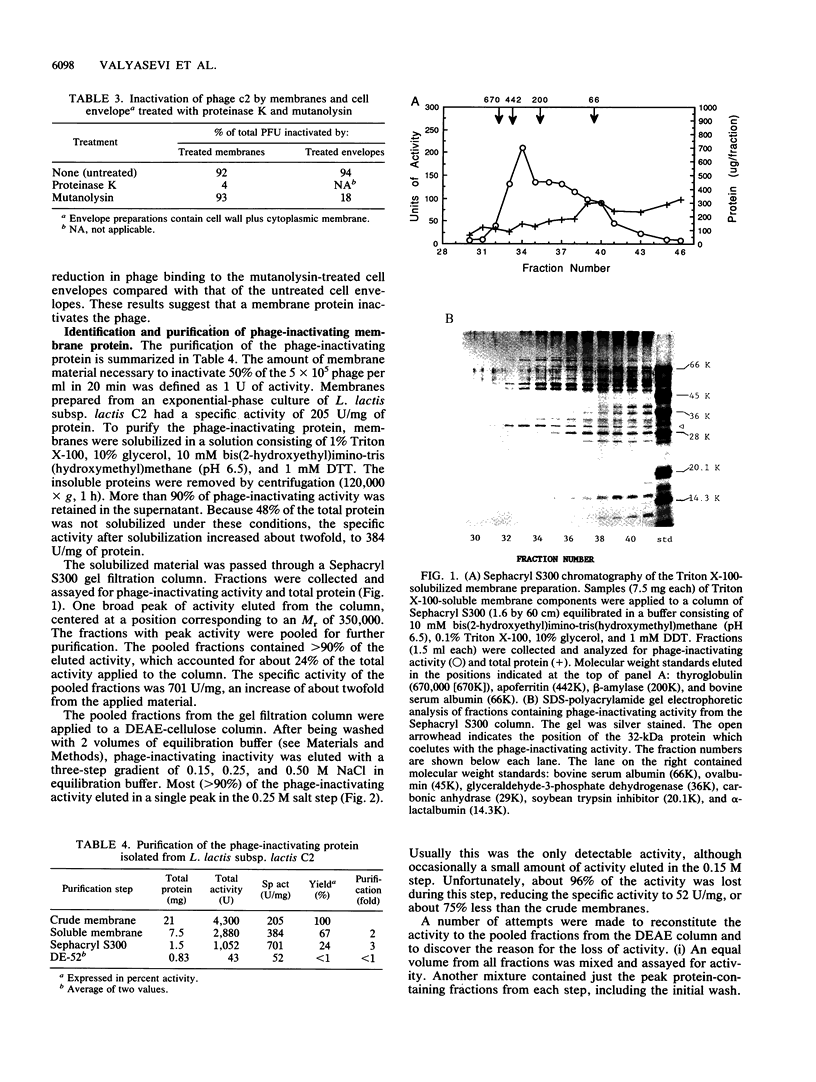
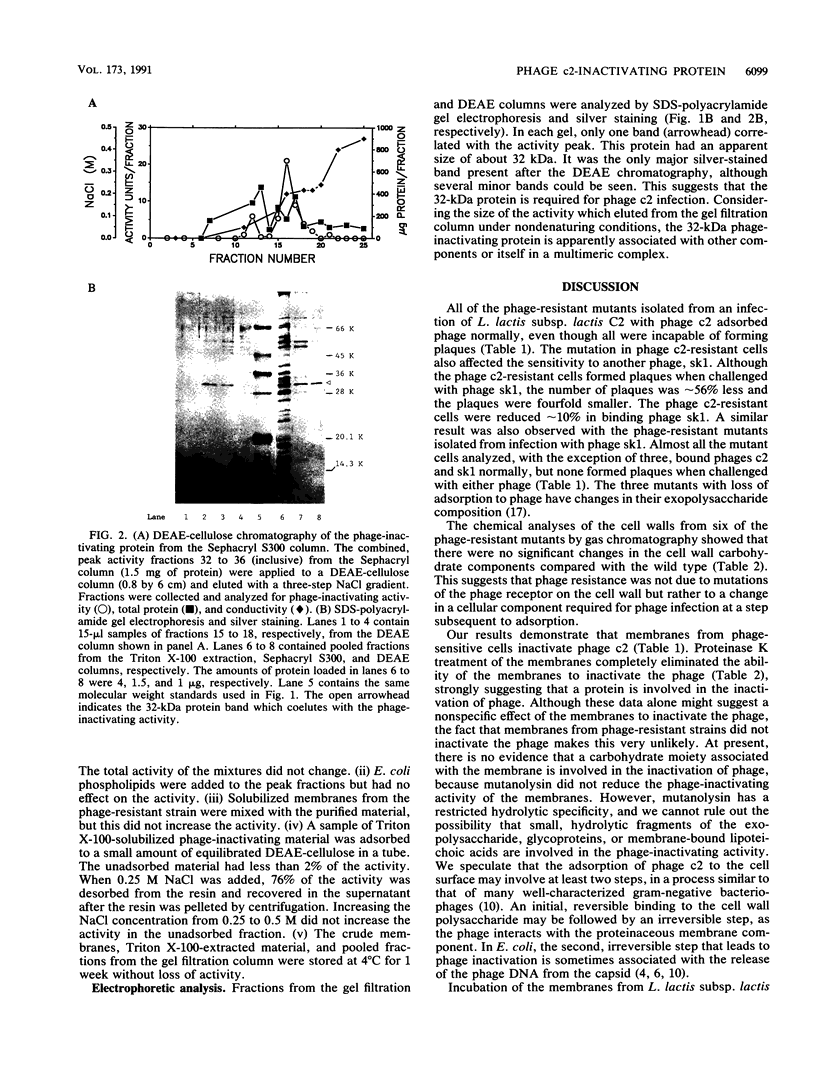
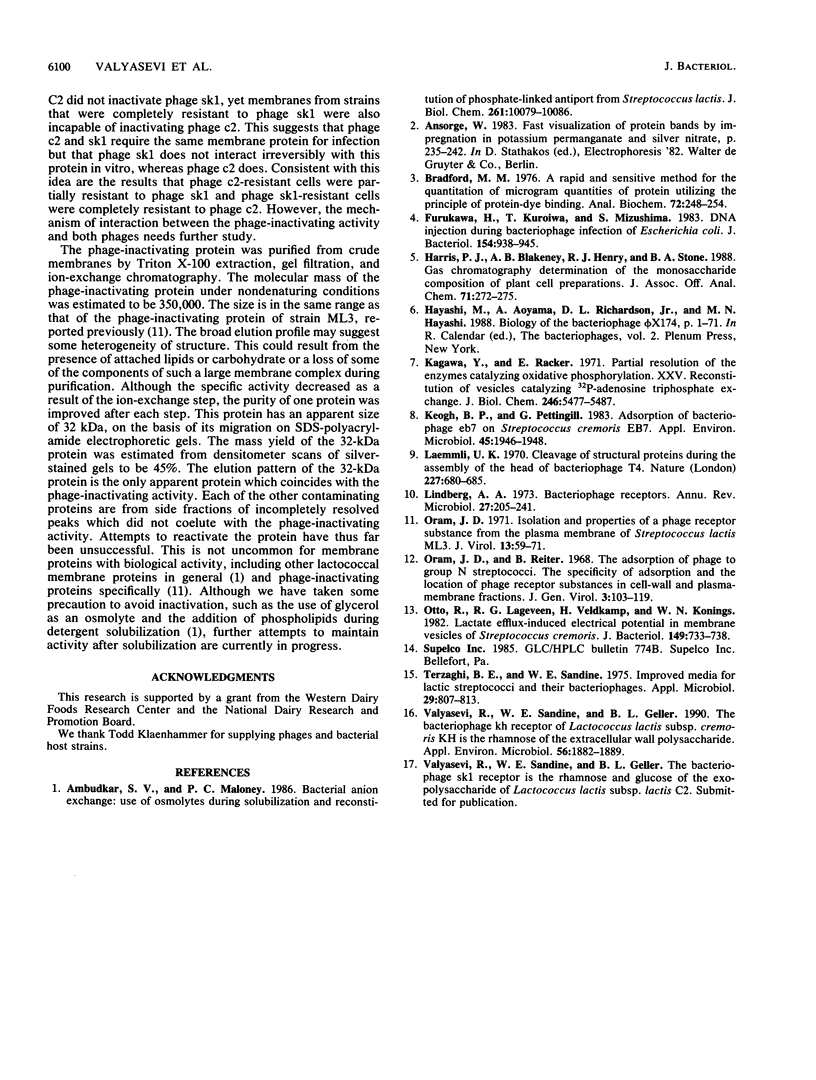
Images in this article
Selected References
These references are in PubMed. This may not be the complete list of references from this article.
- Ambudkar S. V., Maloney P. C. Bacterial anion exchange. Use of osmolytes during solubilization and reconstitution of phosphate-linked antiport from Streptococcus lactis. J Biol Chem. 1986 Aug 5;261(22):10079–10086. [PubMed] [Google Scholar]
- Bradford M. M. A rapid and sensitive method for the quantitation of microgram quantities of protein utilizing the principle of protein-dye binding. Anal Biochem. 1976 May 7;72:248–254. doi: 10.1016/0003-2697(76)90527-3. [DOI] [PubMed] [Google Scholar]
- Furukawa H., Kuroiwa T., Mizushima S. DNA injection during bacteriophage T4 infection of Escherichia coli. J Bacteriol. 1983 May;154(2):938–945. doi: 10.1128/jb.154.2.938-945.1983. [DOI] [PMC free article] [PubMed] [Google Scholar]
- Keogh B. P., Pettingill G. Adsorption of Bacteriophage eb7 on Streptococcus cremoris EB7. Appl Environ Microbiol. 1983 Jun;45(6):1946–1948. doi: 10.1128/aem.45.6.1946-1948.1983. [DOI] [PMC free article] [PubMed] [Google Scholar]
- Laemmli U. K. Cleavage of structural proteins during the assembly of the head of bacteriophage T4. Nature. 1970 Aug 15;227(5259):680–685. doi: 10.1038/227680a0. [DOI] [PubMed] [Google Scholar]
- Lindberg A. A. Bacteriophage receptors. Annu Rev Microbiol. 1973;27:205–241. doi: 10.1146/annurev.mi.27.100173.001225. [DOI] [PubMed] [Google Scholar]
- Oram J. D. Isolation and properties of a phage receptor substance from the plasma membrane of Streptococcus lactis ML 3. J Gen Virol. 1971 Oct;13(1):59–71. doi: 10.1099/0022-1317-13-1-59. [DOI] [PubMed] [Google Scholar]
- Oram J. D., Reiter B. The adsorption of phage to group N streptococci. The specificity of adsorption and the location of phage receptor substances in cell-wall and plasma-membrane fractions. J Gen Virol. 1968 Jul;3(1):103–119. doi: 10.1099/0022-1317-3-1-103. [DOI] [PubMed] [Google Scholar]
- Otto R., Lageveen R. G., Veldkamp H., Konings W. N. Lactate efflux-induced electrical potential in membrane vesicles of Streptococcus cremoris. J Bacteriol. 1982 Feb;149(2):733–738. doi: 10.1128/jb.149.2.733-738.1982. [DOI] [PMC free article] [PubMed] [Google Scholar]
- Terzaghi B. E., Sandine W. E. Improved medium for lactic streptococci and their bacteriophages. Appl Microbiol. 1975 Jun;29(6):807–813. doi: 10.1128/am.29.6.807-813.1975. [DOI] [PMC free article] [PubMed] [Google Scholar]
- Valyasevi R., Sandine W. E., Geller B. L. The bacteriophage kh receptor of Lactococcus lactis subsp. cremoris KH is the rhamnose of the extracellular wall polysaccharide. Appl Environ Microbiol. 1990 Jun;56(6):1882–1889. doi: 10.1128/aem.56.6.1882-1889.1990. [DOI] [PMC free article] [PubMed] [Google Scholar]




